If I were to inquire: What is the characteristic appearance of a typical swimmer? Chances are, your mental image might include the following: Tall, or muscular physique, and Wide shoulders Among these attributes, the standout feature for most swimmers is undoubtedly their broad shoulders. Regardless of age, height, gender, or any other factor, if I were to spot you on the street and had to guess whether you are a swimmer, my first focus would be on your shoulders and their proportional breadth about your waistline.
Swimming is frequently praised as one of the most inclusive and advantageous forms of exercise. Beyond its cardiovascular benefits, swimming can notably influence your physique, especially your shoulders. But does swimming contribute to broadening your shoulders?
In this blog post, we plunge into the depths of this fascinating query to unveil the science and mechanics behind the stereotype of swimmers having broad shoulders.
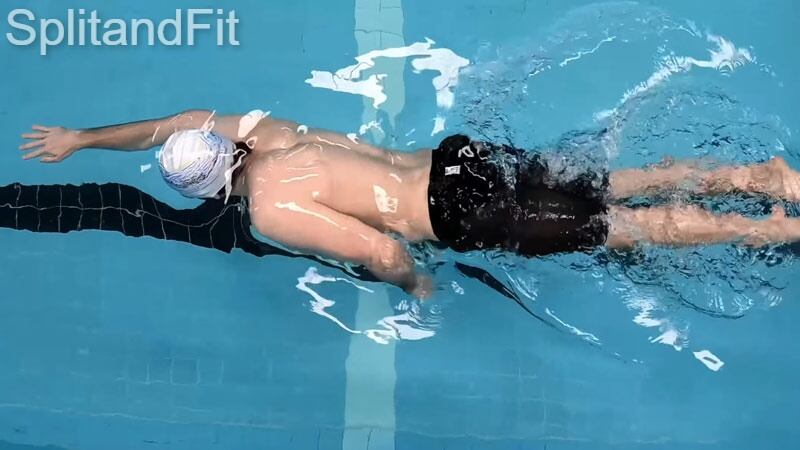
Does Swimming Give You Broad Shoulders?
Yes, swimming can contribute to making shoulders wider. The specific movements involved in swimming, such as the wide strokes and continuous use of the arms, target the muscles in the shoulders. Over time, this repetitive engagement and resistance from the water can lead to the development and broadening of the shoulder muscles.
The combination of various strokes, the resistance provided by water, and the sustained effort during swimming workouts all play a role in shaping broader shoulders. Regular and consistent swimming can contribute to the enhancement of shoulder width and definition.
What Causes Broad Shoulders For Swimmers?
The continuous and repetitive arm movements involved in swimmers’ stroke techniques are a key reason for the development of broad shoulders. This movement strengthens and builds up the muscles in their shoulders, contributing to the broader appearance.
Additionally, swimmers develop upper body strength, core stabilization, and reduced body fat due to their rigorous training, all of which can contribute to the distinctive shoulder development observed in swimmers. These factors, combined with genetic predispositions, help explain the broad shoulders commonly associated with swimmers.
The Mechanics of Swimming Wide Shoulders
The mechanics behind developing wider shoulders through swimming are rooted in the specific movements and muscle engagement required in this aquatic exercise.
- Repetitive Arm Movements: The primary driver behind the development of wide shoulders in swimmers is the repetitive arm movements involved in swimming. The freestyle, butterfly, backstroke, and breaststroke strokes all require powerful and coordinated movements of the arms, engaging the muscles of the shoulder girdle and upper back extensively.
- Muscle Engagement: These arm movements engage the deltoid muscles, which are responsible for the rounded contour of the shoulder, as well as the trapezius and latissimus dorsi muscles. The continuous activation and strengthening of these muscles contribute to the broadening effect on the shoulders.
- Resistance Training: Swimming acts as a form of resistance training for the upper body. The water provides constant and consistent resistance to the arm movements, leading to muscle hypertrophy in the shoulders, particularly in the deltoids.
- Core Stabilization: Effective swimming also requires the significant engagement of the core muscles to maintain stability and streamline body position. This core engagement, in conjunction with the arm movements, contributes to the overall development of a strong and stable upper body, including the shoulders and surrounding musculature.
- Reduced Body Fat: Swimming is a full-body workout that often leads to a reduction in body fat percentage. As the body fat decreases, the underlying musculature becomes more pronounced, resulting in a more defined and broad-shouldered appearance.
- Genetic Predispositions: While the physical demands of swimming contribute significantly to shoulder development, genetic predispositions also play a role. Some individuals may naturally have broader shoulders, and swimming can further enhance this trait through targeted muscle engagement and strengthening.
These factors collectively contribute to the distinctive wide shoulders observed in swimmers, making it a sport renowned for shaping the upper body and promoting a strong, athletic physique.
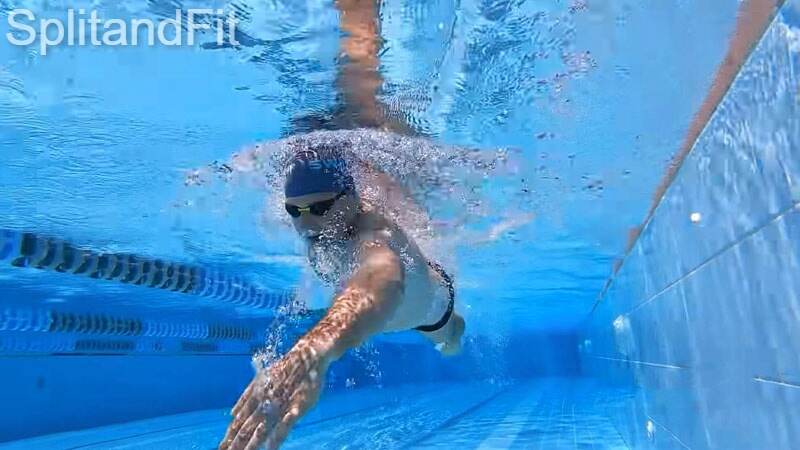
Why Do Swimmers Have Broad Shoulders?
Swimmers tend to have broad shoulders because swimming engages specific muscles in the upper body, especially the shoulders. Here’s why:
- Stroke Movement:
- Freestyle and Butterfly Strokes: These strokes involve a wide, sweeping motion of the arms. The constant repetition of reaching forward and pulling through the waterworks the muscles in the shoulders, making them broader over time.
- Breaststroke: While Breaststroke has a different arm movement, the outward pull and subsequent inward motion still engage the shoulder muscles.
- Resistance Training:
- Water provides resistance in all directions, requiring swimmers to use more force in their arm movements. This resistance enhances the workout for shoulder muscles, leading to their development.
- Continuous Movement:
- Swimming is a full-body exercise, and the arms are constantly in motion during a swim. This sustained effort contributes to the development of shoulder muscles, making them broader and more defined.
- Core Engagement:
- Efficient swimming also requires a strong core. The connection between the core and shoulder muscles is crucial for stability and power during strokes, leading to overall shoulder development.
- Adaptation to Buoyancy:
- Swimmers naturally position their bodies horizontally in the water. This positioning, along with the buoyancy of the water, encourages a proper high elbow catch and pull through the water, emphasizing shoulder engagement.
Why don’t swimmers have large legs then?
Swimmers often don’t have large legs for a few reasons:
- Buoyancy Effect:
- Water supports a significant portion of the body weight, reducing the impact on the legs. This buoyancy means that swimmers don’t need as much leg muscle mass to support their bodies compared to activities like running or weightlifting.
- Streamlined Body Position:
- Efficient swimming requires a streamlined body position. Swimmers keep their legs relatively straight and close together to minimize drag. This reduces the need for large leg muscles, as excess muscle could create more resistance in the water.
- Focused Muscle Use:
- Swimming primarily relies on upper body muscles for propulsion. While the legs contribute to overall body movement, they are not as heavily engaged as the arms and shoulders. As a result, swimmers may not develop the same level of muscle mass in their legs.
- Endurance vs. Power:
- Swimming is an endurance-based activity, and the muscles used are more focused on sustaining repeated movements over a long period. This is different from activities that require powerful, explosive leg movements, which might lead to larger leg muscles.
- Sport-Specific Training:
- Swimmers often engage in targeted training that emphasizes the muscles needed for their sport. Since swimming is predominantly an upper-body activity, training programs may not prioritize developing large leg muscles.
It’s essential to note that individual variations exist, and some swimmers may still have well-defined leg muscles, especially if they engage in dryland training or other sports that involve more significant leg development. However, the nature of swimming as an activity tends to prioritize upper body strength and endurance over building large leg muscles.
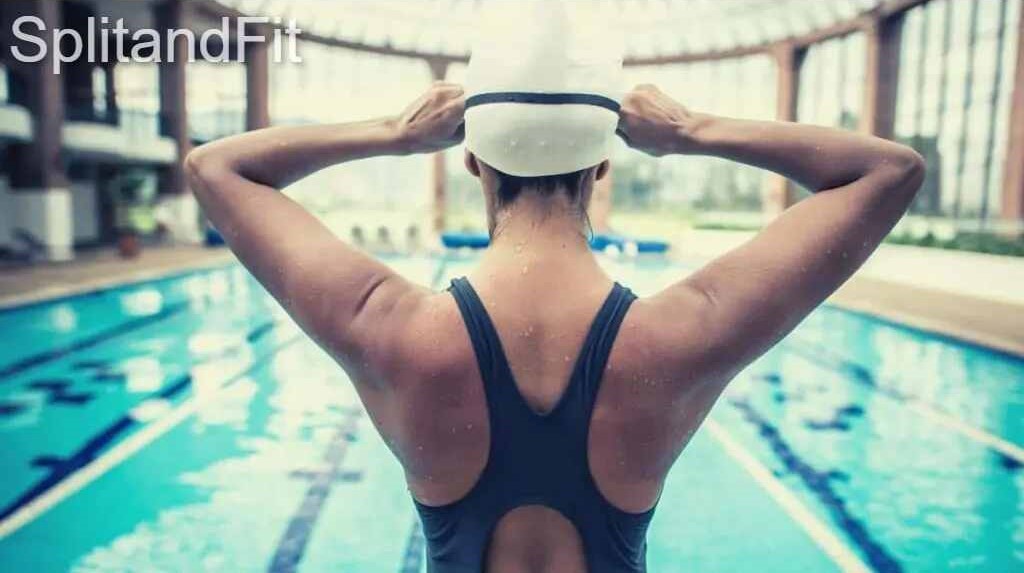
Five Things to Know about the Swimmer’s Body
Here are five key points detailing the characteristics of the swimmer’s body:
- Hydrodynamic Efficiency: The swimmer’s body is ideally shaped to minimize water resistance, featuring a long, streamlined torso, tapered waist, and broad shoulders. This configuration reduces drag and enhances hydrodynamic efficiency, allowing swimmers to move through the water with less resistance.
- Distinctive Muscle Development: A swimmer’s body is characterized by well-developed muscles in the upper body, particularly the shoulders, back, and arms. Strong deltoids, latissimus dorsi, triceps, and pectoral muscles are essential for generating power during strokes and maintaining propulsion in the water.
- Core Strength and Stability: The swimmer’s body possesses a strong and stable core, including well-defined abdominal muscles. Core strength is crucial for maintaining body position, balance, and control in the water, contributing to efficient stroke mechanics and overall performance.
- Optimized Body Composition: Successful swimmers often exhibit a low body fat percentage, which not only enhances their power-to-weight ratio but also improves buoyancy and speed in the water. Reduced body fat allows swimmers to maintain a streamlined profile and facilitates efficient movement through the water.
- Diversity in Body Types: While the ideal swimmer’s body is often associated with specific physical attributes, it’s important to recognize that successful swimmers come in various shapes and sizes. Different body types can excel in different swimming disciplines, with factors such as flexibility, lung capacity, and overall cardiovascular fitness playing significant roles in performance.
These points collectively outline the key characteristics of the swimmer’s body, emphasizing the importance of physical traits, muscle development, and hydrodynamic efficiency in achieving success in the sport of swimming.
Workouts for Swimmers’ Shoulders
Building swimmers’ shoulders involves a strategic workout routine that targets the deltoids, trapezius, and surrounding muscles. Here are key exercises to help you achieve those broad and powerful shoulders
1. Batwing + Dumbbell or Dumbbell Batwing Row
The Batwing + Dumbbell is a dynamic exercise that engages the muscles responsible for scapular retraction and shoulder stability. The addition of a dumbbell intensifies the resistance, making it an efficient workout for those aiming to build strength in the upper back.
How to Perform:
Follow these steps to execute the Batwing + Dumbbell with proper form and maximize its benefits:
- Setup:
- Stand with your feet shoulder-width apart, holding a dumbbell in each hand.
- Bend your knees slightly and hinge at your hips, maintaining a flat back.
- Dumbbell Position:
- Hold the dumbbells with an overhand grip, arms fully extended towards the ground.
- Scapular Retraction:
- Initiate the movement by retracting your shoulder blades (pulling them together) without bending your elbows.
- Imagine squeezing a pencil between your shoulder blades.
- Hold and Squeeze:
- Hold the retracted position for a moment, emphasizing the squeeze in your upper back.
- Ensure your back remains straight throughout the movement.
- Return to Starting Position:
- Gradually release the scapular retraction and return to the starting position.
- Keep the movement controlled and deliberate.
- Repetition:
- Perform 3 sets of 10-12 repetitions, adjusting the dumbbell weight as needed.
- Focus on maintaining proper form and feeling the engagement in your upper back.
2. Shoulder External Rotators / Lats Stretch
The Shoulder External Rotators / Lats Stretch is a versatile exercise that serves a dual purpose: it targets the external rotators of the shoulder, promoting flexibility, and simultaneously stretches the lat muscles, aiding in reducing tightness and improving range of motion.
How to Perform:
Follow these steps to execute the Shoulder External Rotators / Lats Stretch with precision and experience its rejuvenating effects:
- Starting Position:
- Stand with your feet shoulder-width apart, maintaining an upright posture.
- Extend your arms straight out in front of you at shoulder height.
- External Rotation:
- Rotate your arms outward, so your palms face away from your body.
- Keep your elbows straight during this rotation.
- Stretching the Lats:
- While maintaining the external rotation, slowly raise your arms overhead.
- Feel the stretch along the sides of your torso, targeting the latissimus dorsi muscles.
- Full Extension:
- Continue raising your arms until they are fully extended overhead.
- Keep the external rotation throughout the movement for optimal benefit.
- Hold the Stretch:
- Hold the fully extended position for 15-30 seconds, allowing the stretch to deepen.
- Focus on breathing deeply to enhance relaxation and flexibility.
- Return to Starting Position:
- Lower your arms back to the front, reversing the external rotation.
- Ensure the movement is controlled and deliberate.
- Repetition:
- Repeat the stretch for 2-3 sets, gradually increasing the duration of the hold as flexibility improves.
3. Supine Pulldown
The Supine Pulldown is a versatile exercise that not only strengthens the back muscles but also engages the core and stabilizes muscles. By lying down, individuals can isolate and activate specific muscle groups, making it an excellent addition to any upper-body workout routine.
How to Perform the Supine Pulldown:
Follow these steps to execute the Supine Pulldown with proper form and maximize its benefits:
- Setup:
- Lie on your back on a bench or mat, ensuring your feet are flat on the ground.
- Grasp a barbell or cable attachment with a wide overhand grip, hands slightly wider than shoulder-width apart.
- Starting Position:
- Extend your arms fully, keeping a slight bend in the elbows.
- Position the barbell or cable directly above your chest.
- Pulling Phase:
- Engage your lat muscles and initiate the movement by pulling the barbell or cable towards your chest.
- Focus on squeezing your shoulder blades together as you bring the barbell or cable down.
- Contraction:
- Once the barbell or cable reaches chest level, pause for a moment to feel the contraction in your back muscles.
- Return to Starting Position:
- Slowly and with control, extend your arms back to the starting position, resisting the weight.
- Repetition:
- Perform the desired number of repetitions, aiming for 3 sets of 10-12 reps.
- Adjust the weight to challenge yourself while maintaining proper form.
4. Wall Slide w/Upward Rotation & Lift-off to Swimmer Hover
The Wall Slide with Upward Rotation & Lift-off to Swimmer Hover is a comprehensive shoulder exercise that engages the muscles responsible for upward rotation and the posterior chain. It’s particularly effective for individuals looking to improve their shoulder range of motion and strength, essential for activities like swimming and overhead movements.
How To Perform:
Follow these steps to execute this exercise with proper form and maximize its benefits:
- Setup:
- Stand with your back against a wall, ensuring your feet are a comfortable distance away.
- Keep your spine straight, shoulders relaxed, and head in a neutral position.
- Starting Position:
- Position your arms against the wall, elbows bent at a 90-degree angle, and palms facing forward.
- Upward Rotation:
- Begin by smoothly sliding your arms upward along the wall, focusing on the upward rotation of your shoulder blades.
- Keep your core engaged and maintain contact between your arms and the wall.
- Lift-off to Swimmer Hover:
- Once your arms are fully extended overhead, lift them slightly off the wall.
- Mimic a swimmer’s hover position by extending your arms forward, palms facing down, and lifting your chest slightly.
- Hold this position for a moment, feeling the engagement in your shoulders and upper back.
- Return to Starting Position:
- Reverse the motion by sliding your arms back down the wall with controlled movement.
- Bring your arms back to the starting position with elbows bent at 90 degrees.
- Repetition:
- Perform the desired number of repetitions, focusing on smooth and controlled movements.
- Aim for 2-3 sets of 10-12 repetitions, adjusting the intensity based on your fitness level.
5. Landmine Press
The Landmine Press is a versatile shoulder exercise that not only builds strength but also improves shoulder stability and mobility. It engages multiple muscle groups, making it an excellent addition to any upper-body workout routine. This compound movement aids in developing a well-rounded and sculpted upper physique.
How to Perform the Landmine Press:
Follow these steps to execute the Landmine Press with proper form and maximum effectiveness:
- Setup:
- Position a barbell into the landmine attachment or secure it in a corner.
- Load an appropriate weight based on your fitness level and familiarity with the exercise.
- Starting Position:
- Stand facing the end of the barbell, feet shoulder-width apart.
- Grasp the barbell with one hand, positioning your hand at shoulder height.
- Grip:
- Choose a grip that feels comfortable for you. The underhand grip is common, but feel free to experiment with overhand or neutral grips.
- Stance:
- Maintain a stable and balanced stance throughout the exercise.
- Brace your core to provide additional stability to your spine.
- Execution:
- Press the barbell upward in a controlled manner, fully extending your arm.
- Keep your core engaged and avoid arching your back.
- Focus on the upward movement, feeling the contraction in your shoulders and triceps.
- Top Position:
- Hold the top position for a brief moment, emphasizing the contraction in your shoulder muscles.
- Lowering Phase:
- Lower the barbell back to the starting position with a controlled descent.
- Keep the movement smooth, avoiding rapid or jerky motions.
- Repetition:
- Perform the desired number of repetitions for one arm before switching to the other.
- Aim for 3 sets of 8-12 repetitions, adjusting the weight to challenge yourself while maintaining proper form.
These exercises and stretches are specifically designed to strengthen and support the shoulders, providing swimmers with the necessary strength, mobility, and stability to excel in their sport and prevent shoulder-related injuries Strategies for Maximizing Glute Development
Nutritional Strategies for Swimmers
I. Breakfast
| Meal | Food Options |
|---|---|
| Power Start Smoothie | Banana, Greek Yogurt, Spinach, Almond Milk |
| Whole Grain Cereal | Oats or Quinoa with Berries and Skimmed Milk |
| Protein-packed Breakfast | Scrambled Eggs with Avocado and Whole Wheat Toast |
II. Pre-Swim Snacks
| Snack | Options |
|---|---|
| Energy Bar | Nuts, Dried Fruits, and Seeds Mix |
| Fresh Fruit Bowl | Watermelon, Pineapple, and Berries |
| Greek Yogurt Parfait | Layered with Granola and Fresh Fruit |
III. Preparing for the Swim
| Meal | Food Choices |
|---|---|
| Grilled Chicken Salad | Mixed Greens, Cherry Tomatoes, and Olive Oil |
| Quinoa and Vegetable Stir-fry | Broccoli, Bell Peppers, and Tofu |
| Salmon with Sweet Potato Mash | Baked Salmon with Mashed Sweet Potatoes |
IV. Post-Swim Recovery
| Snack | Options |
|---|---|
| Chocolate Milk | Rich in Protein and Carbohydrates |
| Turkey and Cheese Wrap | Whole Wheat Wrap with Turkey and Cheese |
| Fruit Smoothie | Blend of Banana, Berries, and Almond Milk |
V. Hydration
| Drink | Hydration Boosters |
|---|---|
| Water | Infused with Lemon or Mint for Flavor |
| Coconut Water | Natural Electrolytes and Hydration |
| Green Tea | Antioxidants for Recovery |
Frequent Question Answers
| Question | Answer |
|---|---|
| Can swimming change your body shape? | Swimming can change body shape by toning muscles, improving cardiovascular endurance, and contributing to a more toned and fit physique. |
| Why do swimmers have small breasts? | The physical demands of swimming, particularly the upper body workout, may lead to reduced breast size due to decreased body fat percentage. |
| Does swimming make your back broader? | Swimming can develop back muscles, potentially leading to a broader back as it strengthens the upper body and core. |
| Can swimming cause broad shoulders? | Yes, swimming exercises the upper body and shoulders, potentially leading to the development of broader shoulders. |
| Does swimming help your shoulders? | Swimming strengthens the shoulder muscles, helping to improve overall upper body strength and stability. |
| Does swimming make your upper body bulky? | Swimming tends to create a lean and toned upper body rather than a bulky one, as it combines cardiovascular exercise with muscular endurance training. |
| What sport are broad shoulders good for? | Broad shoulders are advantageous in sports such as swimming, rowing, and boxing, where upper body strength and stamina are essential. |
| Will my shoulders get smaller if I stop swimming? | If you stop swimming and reduce upper body exercise, your shoulder muscles may decrease in size due to reduced physical demand. |
| What does a female swimmer’s body look like? | A female swimmer’s body is often characterized by toned muscles, especially in the shoulders and core, contributing to a fit and athletic physique. |
| What kind of shoulders are most attractive? | The attractiveness of shoulders is subjective, but well-toned, strong, and symmetrical shoulders are often considered attractive and desirable. |
Also Read: Top 10 Best Proteins to Grow Glutes in 2023-24
Conclusion
In conclusion, the impact of swimming on shoulder width is noteworthy, with swimmers often displaying well-defined and robust shoulders due to the rigorous upper body engagement in various strokes. However, achieving broad shoulders requires a comprehensive approach. Relying solely on swimming may not be sufficient, necessitating the inclusion of targeted shoulder exercises and a balanced nutritional regimen. Individual factors like genetics and body type also contribute, emphasizing the importance of a holistic fitness routine.



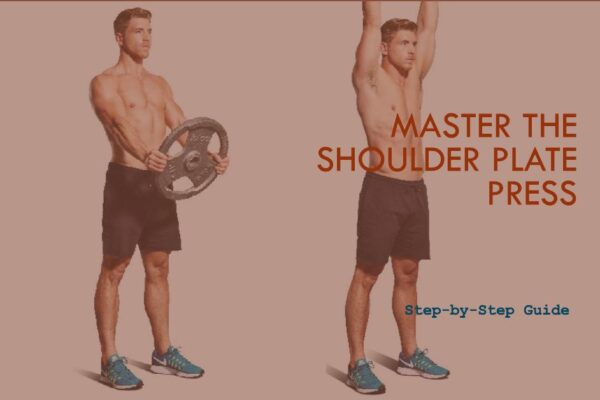
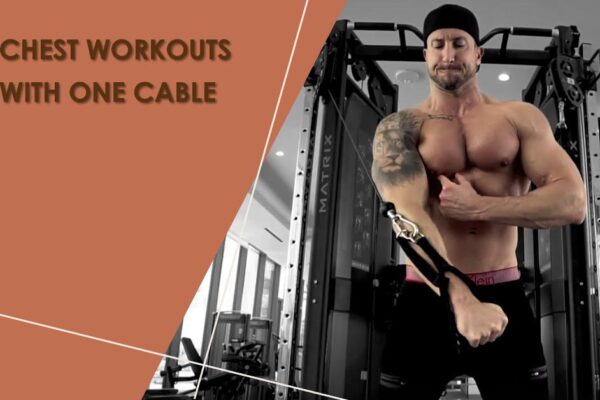
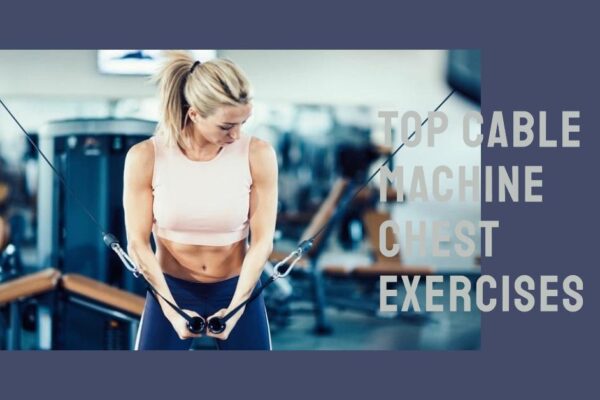
Leave a Reply